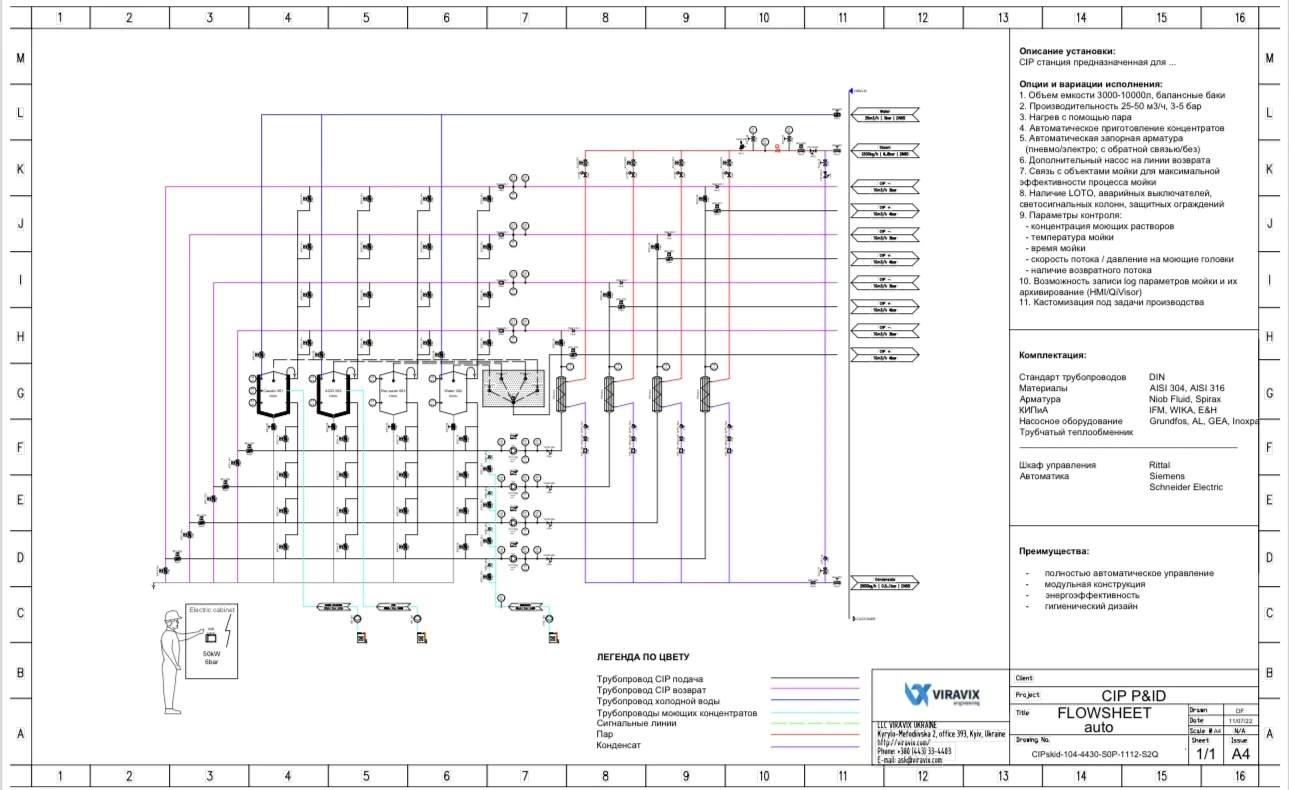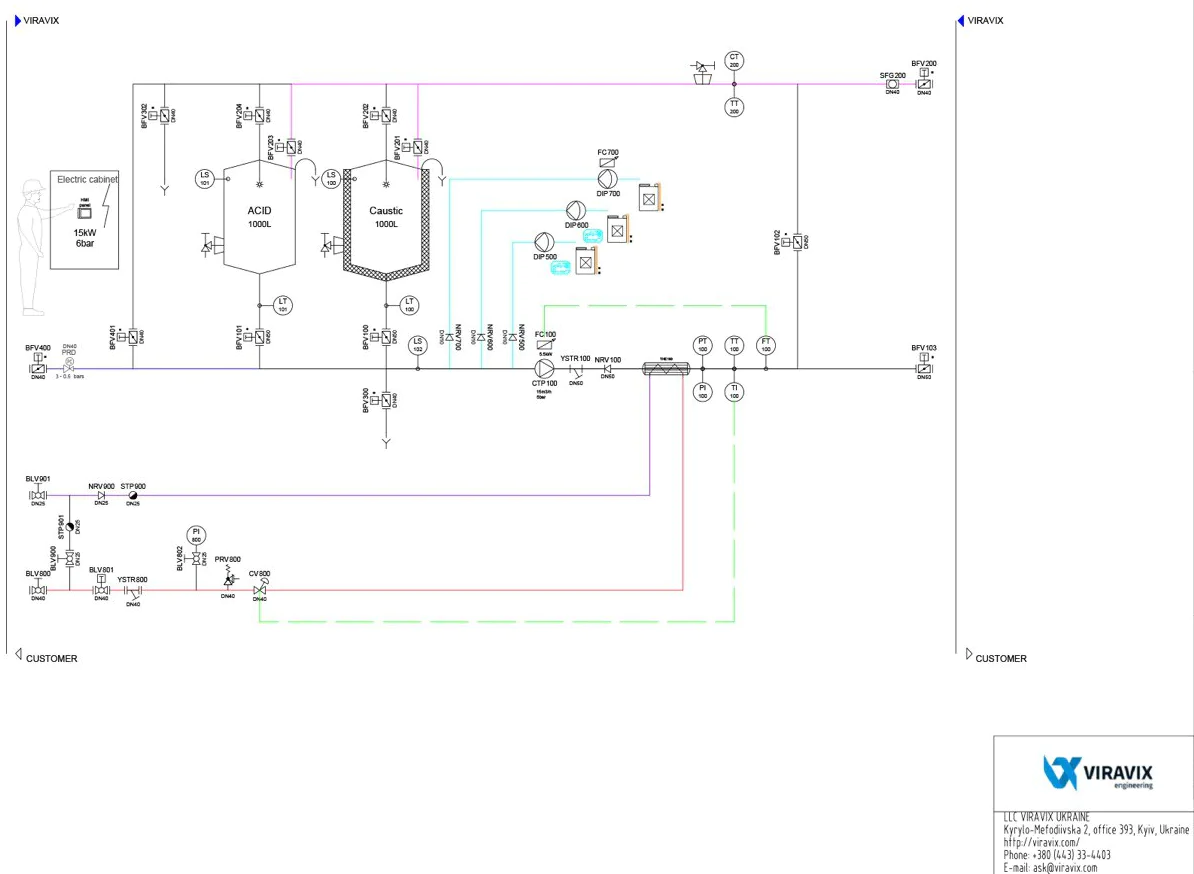15.10.2024
How
News
P&ID scheme for CIP stations. What is needed for this?
Features:
Centralized CIP systems are most effective in smaller facilities where the distance between the station and the wash objects is short. Centralized systems are also common in relatively large facilities, where all CIP operations are performed from a room with one or a group of CIP stations, from which detergents are delivered to different cleaning facilities.
Decentralized CIP systems are more common in large enterprises, where the distances from the central CIP station to the washing facilities can be very long. A decentralized CIP system uses several distributed CIP stations located near the washing facilities.
Options and design variations:
- Tank capacity 1000-4000L (6000-10000L for multi-circuit)
- Capacity 10-30 m3/h (30-50 m3/h for multi-circuit), 3-5 bar
- Heating by electric heating elements, hot water, steam
- Automatic preparation of concentrates
- Automatic shut-off valves (pneumatic/electric; with/without feedback)
- Additional pump on the return line
- Communication with washing objects for maximum efficiency of the washing process
- Availability of LOTO, emergency switches, light columns, protective fences
- Control parameters:
a. concentration of washing solutions
b.washing temperature
c. washing time
d. flow rate / pressure on the washing heads
e. presence of reverse flow
10. Possibility of recording and archiving of washing parameters log (HMI/QiVisor)
What information is needed for design:
- Types of equipment and piping
Determine what types of equipment and piping need to be cleaned with the CIP station. This can be a variety of equipment such as tanks, pumps, mixers, pipes, and other items.
- Dimensions and capacities
Specify the dimensions and capacities of the equipment and pipelines to select the appropriate tanks and systems for CIP procedures.
- Performance requirements
Determine the performance requirements of the CIP station, i.e. how much time and resources are required to perform one cycle of cleaning.
- Types of contaminants
Consider the types of contaminants the CIP system will encounter. For example, removing protein deposits may require a more aggressive cleaning solution than removing mineral deposits.
- Control and automation systems
Consider the need for control and automation systems for the CIP process. This may include automatic control of water flow, cleaning solutions, temperature and exposure time.
- Compliance with standards
Ensure that the CIP station you choose meets the applicable standards in your industry, such as hygiene, safety, and environmental regulations.
- Budget
Determine the budget you are willing to allocate for the purchase of a CIP station and find the best combination of price and quality based on your requirements and preferences.
This information will help you choose the right CIP station that best meets your needs and production requirements.

